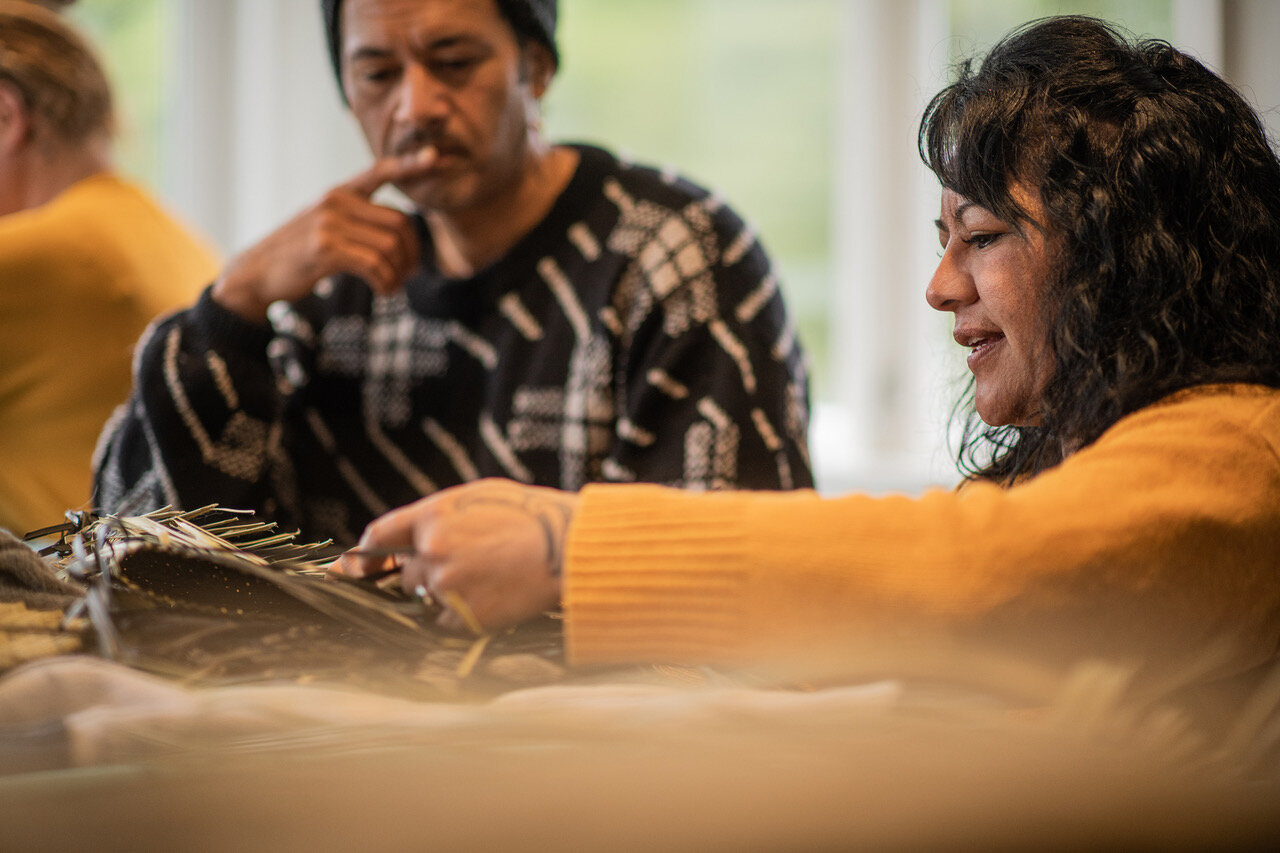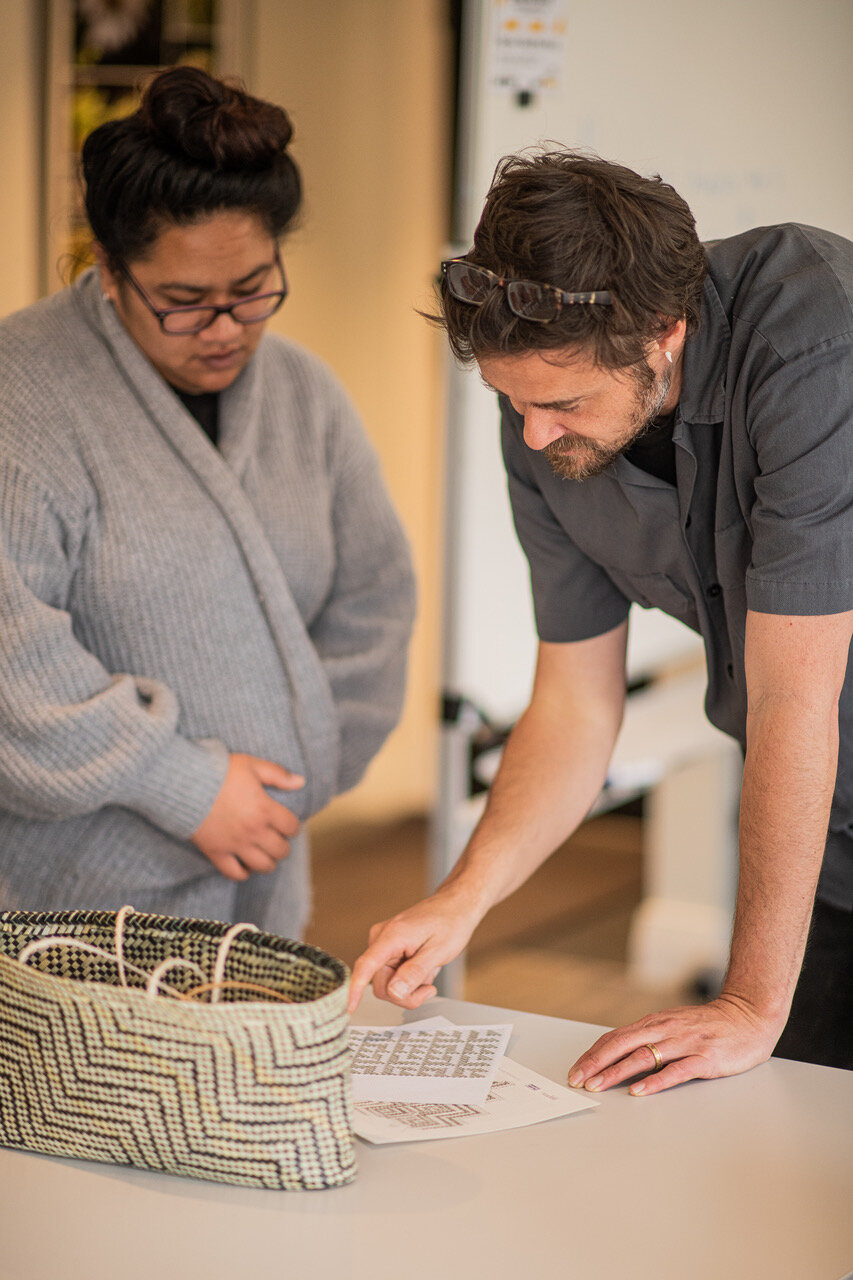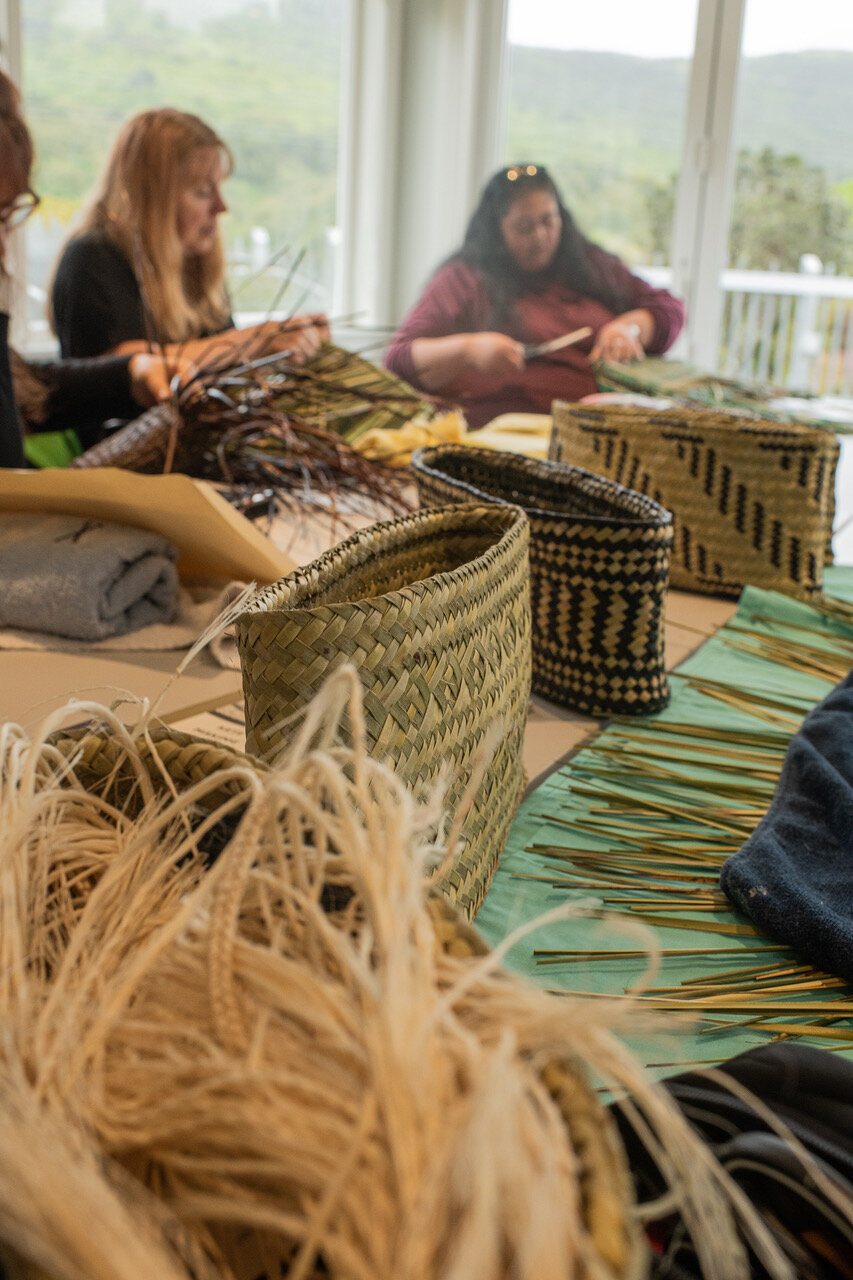If you put your hand in your pocket right now, your fingers might touch a miniature story. On one side is a woman’s face, the same woman’s face, older or younger, larger or smaller. On the other side, there might be a ship, a bird, or even another face. There will be numbers that tell you the value we place on that particular story, and there will be values that cannot be numbered.
Matthew McIntyre Wilson’s series The Price of Change asks us to think about the stories we carry with us, the value(s) we place on them, and what they have cost us. Begun in 2008, the series of brooches have been extended to reflect the stories of Matariki.
The brooches are made by harvesting the elements of coins from Aotearoa, Britain, and the Cook Islands and then recombining them to create arresting images. Elements like New Zealand ora and fauna, the symbols of the different nations that make up the United Kingdom, Māori iconography, and imagery of statehood and sovereignty all appear on the coins Matthew has used.
“By arranging the motifs found on New Zealand coins, United Kingdom coins and other Pacific Island coins, I was able to create compositions that possess narratives of a historical, political, environmental and cultural nature. One of the things I enjoy about making these is that there are so many possibilities for the compositions within a restricted range of coins. It is appealing to me that you can combine imagery commonly found in pockets and purses all around New Zealand and arrange them to be viewed in an entirely new context.”
For Matariki 2018, Matthew has continued work on The Price of Change to draw out his reflections on Taranaki and the star Puanga. Taranaki is the only landscape feature left on our coins and appears throughout the series of brooches. As Taranaki iwi, Matthew sees the image of the mountain as a connection between himself, the material he works with, and the stories his pieces are telling.
Some of these stories are especially connected to Matariki. For Taranaki whānui, Puanga (known as Rigel in English) appears just before Matariki and marks the beginning of Matariki in the Taranaki region. Some of the pieces displayed here feature the single star of Puanga to reflect the experience of seeing Matariki from the west coast, while other pieces feature the seven stars of the constellation. The karakia that accompanies this collection knits together these various experiences of Matariki from Taranaki and around the country.
Matariki is a time for stories. In the cold, dark weather of early winter, whānau have always gathered indoors to tell stories old and new. Some stories recollect a barely visible past, while others are visions of the future. They are an opportunity to remake the space we live in.
Take Courtenay Place, for example. The area where Matthew’s works stand is part of Te Aro Pā, one of the largest pā in Wellington until the 1880s, where large numbers of Ngāti Ruanui, Te Atiawa, and Taranaki people lived and continue to live. The Price of Change reflects some of the personal and collective histories of the people who live in Wellington today.
“The history of many New Zealanders is like my own, a mix of Māori, Scottish, Irish and British and the potent images found on the coins create various interpretations
dependent on an individual’s heritage or perspective of this country. In New Zealand, where there is such a turbulent history between the crown and Māori, there are numerous stories and perspectives to be told. As a collection, it feels open-ended to me as far as the compositions go. It is constantly evolving. It holds the same appeal to me as weaving and pattern making, the restrictions at first seem, well, restricting, but there is a sense of freedom within that. The choices that you make in order to restrict yourself and then the limits you can stretch out to is a form of creativity I enjoy.”
Objects help us to craft the stories we want to tell. The Price of Change series repurposes one of the most common objects we carry with us, the coins in our pockets and purses. It invites us to think harder about these little pieces of metallic storytelling that we carry with us everywhere and exchange with others. What do the pictures on them say about our history, about the people who were here before us, about the movement of people to and across Aotearoa? Whose faces and which words are inscribed there? How does that visual and verbal information change when we see coins cut, rearranged, and magnified? What other stories are those coins able to share?
Written by Nikki Hessell
Photography by Amber-Jayne Bain















![Turumeke Harrington [Kai Tahu]](https://images.squarespace-cdn.com/content/v1/5e1aa07245243a129ec4e8bd/1695596006645-8CP4CHSF586LBZKKVA2Z/IMG_8691.JPG)


![Ngaahina Hohaia [Taranaki]](https://images.squarespace-cdn.com/content/v1/5e1aa07245243a129ec4e8bd/1695596044647-HSTWJWMIRJQVX2NFRQR7/IMG_8745.JPG)

![Kezia Whakamoe [Tūhoe, Ngāti Ruapani]](https://images.squarespace-cdn.com/content/v1/5e1aa07245243a129ec4e8bd/1695596042303-MMH59DPOU5WBX43HYNPX/IMG_8701.JPG)

![Isaac Te Awa [Kāti Māmoe, Kāi Tahu, Waitaha, Ngā Puhi]](https://images.squarespace-cdn.com/content/v1/5e1aa07245243a129ec4e8bd/1695595990642-2RF6QUIP7J9VARDOE72D/IMG_8689.JPG)

![Matthew McIntyre Wilson [Taranaki]](https://images.squarespace-cdn.com/content/v1/5e1aa07245243a129ec4e8bd/1695596078487-ZQ41C8360HEVAL7UL3K9/IMG_8762.JPG)


![Matthew McIntyre Wilson [Taranaki]](https://images.squarespace-cdn.com/content/v1/5e1aa07245243a129ec4e8bd/1695595977021-ZDPLXYHT9BOF685Z3DT0/IMG_8686.JPG)





















































